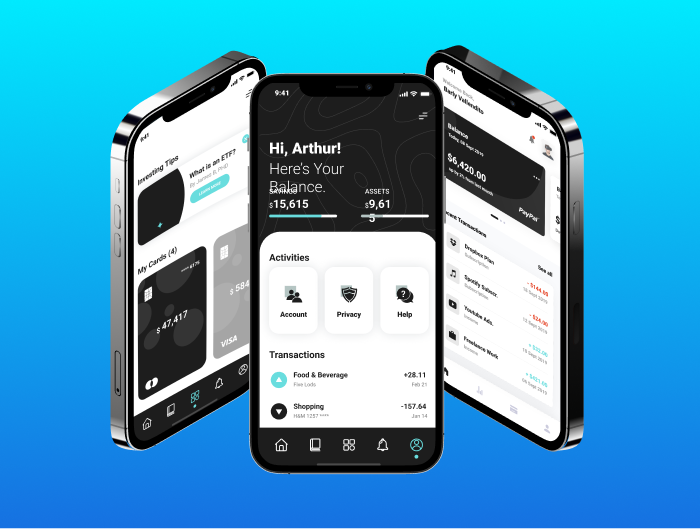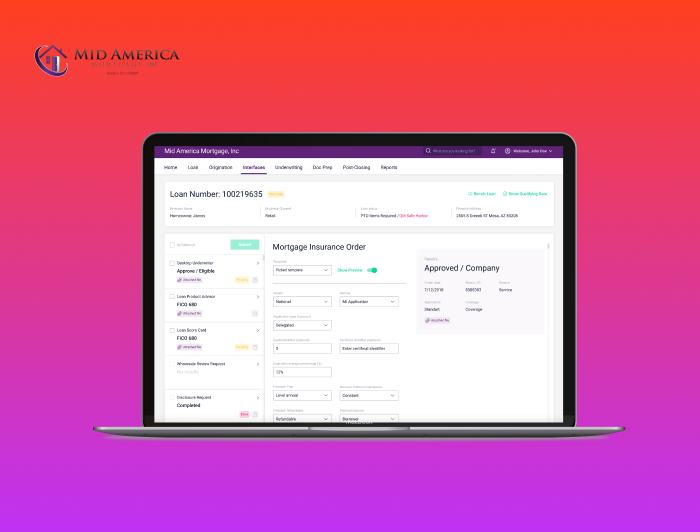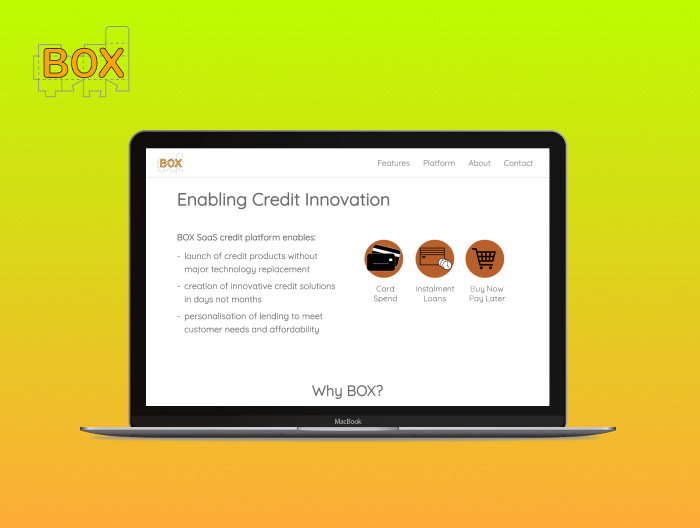
Secure Blockchain Development Tips & Tricks to Accelerate Your Time-to-Market
Your Guide to Distributed Blockchain-Based Applications
You have heard the hype around blockchain technologies and cryptocurrencies. You have heard of the enormous swings in the price of Bitcoins. However, blockchain security has a vast potential outside of cryptocurrencies. CSINSIGHT’s research identifies no less than 58 big industries blockchain could disrupt, and there’s a high chance your industry will be next. NerdySoft presents a guide to practical and secure blockchain development to help you gain momentum for your next software product.
Content Outline:
- What do you want to accomplish?
- What is the appropriate blockchain platform?
- What functionality does your DApp need?
- Prototype
- Finalized requirements
- Blockchain development and testing
- How could blockchain technology be attacked?
- Blockchain security ground rules and best practices
- How to choose the most secure blockchain network?
What Is Blockchain Technology? Blockchain 101
Blockchain technology is the opposite of traditional database technology. Instead of storing data in a centralized database, blockchain data are distributed across many nodes. The data to be stored are consolidated into blocks, and the blocks are securely linked together (chains of blocks) and form a distributed ledger. Once the block contents are validated, blockchains are designed not to be changed (immutable blocks). The plan is that these distributed immutable linked blocks can provide a more trusted and secure data store than a single database. Hence, one of the main differentiators of blockchain technology is its security.
The standard block in a blockchain contains three sets of data, the set of transactions included in the block, the cryptographic hash of the previous block, and the current block’s cryptographic hash. The blocks can store a wide range of information. The current block cryptographic hash is part of the validation process based on the block’s transaction data. Using the current block’s hash value as validation linkage to the previous block provides a verifiable chain from the first block to the last block in the chain.
Blockchain types and access rules
There are public and private blockchains. Public blockchains are accessible by anybody who has the appropriate software and an internet connection. The transparency provided when everyone sees everything is a cornerstone of public blockchains. Private blockchains, in contrast, are restricted to a limited number of allowed entities. A private blockchain typically has a controlling entity that decides who gets to participate and provides those participants with digital identities to access the blockchain.

Security aspects
Blockchain technologies provide different types of protections.
Can my data be forged?
Once transaction data are recorded in a validated block, blockchain technology is designed to stop that information from being changed.
Is my data private?
In a private blockchain, there are access controls that limit who can see your data. In a public blockchain, everyone can see everything.

What Is the Blockchain Development Process, and What Role Does Security Play in It?
- Decide what you want to achieve.
- Select an appropriate blockchain platform that is best suited for what you want to do.
- Flesh out the details of what specific functionality is needed and what software architecture will best support that functionality.
- Build a prototype to confirm that what you asked for is what you want.
- Expand on the learnings from the prototype to firm the requirements for your solution.
- Develop and test your solution.
What do you want to accomplish?
Blockchain technologies are used in various sectors. You can pursue one of those sectors or innovate in a new domain. In a 2019 Gartner CIO Agenda survey, 5% of the CIOs considered blockchain to be a game-changer for them. It could be a game-changer for you.
Bitcoin was the very first implementation of blockchain technology. In 2011, the initial value of a Bitcoin was US$0.30. According to the Wall Street Journal, in November 2021, Bitcoin’s value rose above US$68,000. Since the introduction of Bitcoin, numerous additional digital currencies have been developed. Expanding on that initial technology foundation, smart contract applications were developed. These smart contracts eliminated intermediaries’ need to do things like releasing payments when contract terms have been met. Additionally, blockchains have been developed in the areas of healthcare, supply chain, financial services, insurance, and others.
What is the appropriate blockchain platform?
What functionality does your DApp need?
Now that you know what you want to accomplish and what platform to use to build your DApp, you need to firm up the specific things that your DApp should do. Is it a private or public blockchain? How many use cases do you want to support? What other technologies do you need to use? What software architecture design would help you achieve your goals in the most cost-effective way?
Prototype
- Can we achieve our planned accomplishment?
- Is the chosen platform well suited for my plans?
- Are the use cases appropriate and achievable?
- Can we interact with the desired additional technologies in the desired way?
Finalized requirements
If, after assessing prototype results, you are ready to move on, you need to establish much more detailed requirements that extend the prototype starting point. Such requirements include user functionality and user interface mock-ups, administration functionality and interface mock-ups, exact integration requirements, and all other vital aspects of the initial version of the DApp.
Blockchain development and testing
Based on the requirements and scope of the DApp, a project team is assembled. That multi-disciplined team needs to engage in the planning, oversight, development, and testing of the DApp through several application iterations.
DApp Security Considerations
As we previously mentioned, security and transparency are the two main features that set blockchain technology apart from other platforms. These are the main factors for many security-focused industries to decide on blockchain development for their next project. This is why ensuring top-most security is a must for any blockchain project.
However, security is not a last-minute action. Building a secure application is not an accident; it is a deliberate process. At each of the stages of the blockchain development process, security is an active consideration. The decision to use public or private blockchains has security implications. The chosen platform may also have security considerations. When assessing the prototype and testing the DApp, active security probes should search out weaknesses.
How could blockchain technology be attacked?
The two main areas where blockchains are vulnerable are at the end of the chain as new blocks are added and existing blocks are inappropriately modified. Private and public blockchains can be subjected to different types of attacks.
Public blockchains
For public blockchains, new blocks are added by consensus reached among participating nodes. There are different methods of achieving consensus. The decision to validate a block is both in the interest of the participating node and the involved parties. The underlying assumption is that participating nodes act with collective self-interest. If that assumption is not valid and enough bad actors gain control of the validation process, gaining >51% of the network, then skewed transactions can be added to the end of the blocks in the chain. If those bad actors had enough computing power and control, they could start at the first block and re-write history as desired. Each blockchain platform has different rules designed to avoid that 51% control attack.
Private blockchains
Private blockchains are not subject to 51% attack because the centralized body controls who validates the blocks added to the chain. Instead, the risk for private blockchains comes from hackers who get access to the limited validation nodes and attack the integrity of the distributed ledger.
Blockchain security ground rules and best practices
Although blockchains have been in use since 2009, there are not many regulations established to cover blockchains. However, that is changing. In looking at your security rules and best practices, be aware of any regulatory compliance activities you need to complete.
Once you decide on the rules you need to adhere to, you need to establish your blockchain participants’ regulations. Who gets to participate in what role? What rules are used to validate blocks? How do you avoid being attacked by bad actors? How are block collisions resolved? If permitted parties are involved, how are they identified and secured?
You should make careful and conscious decisions on these topics to ensure that your blockchain is secure and unfortunate blockchain outcomes will not hurt your business.
How to choose the most secure blockchain network?
You don’t want to create blockchain applications from scratch. Instead, you should select the blockchain framework best suited for what you want to accomplish. There are various proven open-source and commercial platforms you can use as the foundation for your blockchain. To pick the best one, you should consider the successful uses of the framework so far. In addition, you should look at the consensus approach enforced by the framework.


Secure blockchain development with NerdySoft
- the art of the possible and help you decide what you wish to accomplish,
- how to select the appropriate blockchain framework for your distributed application,
- what key functionality the blockchain should implement,
- how to create the prototype of the blockchain and validate the selected framework,
- how to firm up the detailed requirements of your application,
- how we can provide the team to develop your application, and
- how we can help deploy the application into your target ecosystem.
We often help you develop the functionality deployment plan over multiple releases as part of the blockchain development strategy. While we are building out the new releases, we can also maintain the current release.
NerdySoft is a dedicated software development company, specializing in Software Product Engineering. We develop scalable solutions for the most complex technical issues that businesses of all sizes face across industries. Let our passion for digital transformation help your business enjoy the benefits of blockchain technology. Facing a challenging tech problem? Talk to our expert.
Latest Insights
Stay informed on the latest updates and trends to follow in financial services, digital transformation and software development from NerdySoft





